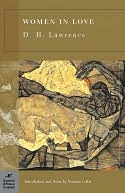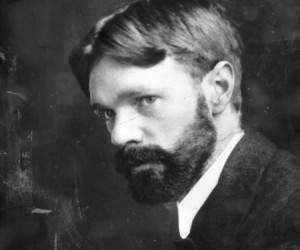“I think I am in love with the void.”
Written in 1920 and often regarded as D. H. Lawrence’s greatest novel, Women in Love is the complex story of two women and two men who scrutinize their lives and personal needs in an effort to discover something that makes the future worth living. The personal and social traumas of post-World War I, combined with the rise of industry and urbanization, have affected all four main characters, often at cross purposes as they explore love and its role in their lives. Intensely introspective and self-conscious, each character shares his/her thoughts with the reader, allowing the reader to participate in the inner conflicts and crises that each faces.
1920 and often regarded as D. H. Lawrence’s greatest novel, Women in Love is the complex story of two women and two men who scrutinize their lives and personal needs in an effort to discover something that makes the future worth living. The personal and social traumas of post-World War I, combined with the rise of industry and urbanization, have affected all four main characters, often at cross purposes as they explore love and its role in their lives. Intensely introspective and self-conscious, each character shares his/her thoughts with the reader, allowing the reader to participate in the inner conflicts and crises that each faces.
Ursula Brangwen, a teacher in a mining town in the Midlands, is attracted to Rupert Birkin, a school supervisor; her sister Gudrun, an artist whose sculptures have drawn some attention in London, is drawn to Gerald Crich, whose father is a mine owner. As the two women earn their living and consider the issue of marriage, which they regard as an impediment to their independence, the men deal with issues of sexuality and power, and whether the love of a woman is enough. Both men have homosexual urges which compete with their feelings for women.

Gerald is the most conflicted of the four. Taking over the mines upon the death of his father, he is fiercely committed to making them successful, even if that means hardening his heart toward his workers. He feels no sense of responsibility toward them, dedicating his efforts toward success and power, an attitude he conveys also toward Gudrun, who finds him self-centered but physically attractive. Rupert Birkin, who is eventually drawn to Ursula, is often thought to have been modeled on Lawrence himself, and his sensitivity, self-analysis, and feeling that love is not enough–that one must progress beyond love to another plane–display the kind of agonized soul searching done by many other young men of his age following the horrors of the world war.
Extremely complex in its exploration of the period’s social and philosophical influences on the characters (who are archetypes of society), the novel is also full of symbolism, with many parallels drawn between love and death, which the characters sometimes prefer to life. As the love affairs of these four characters play out, filled with complications, disagreements about the meaning of love, questions about love’s relation to power and dominance, and the role of sexuality, Lawrence projects the tumult of post-war England as the values of the past yield to newer, more personal goals.
Also reviewed here: LADY CHATTERLEY’S LOVER
